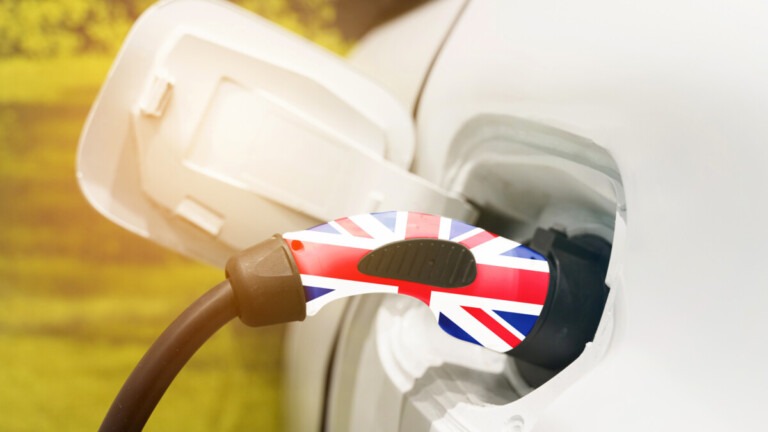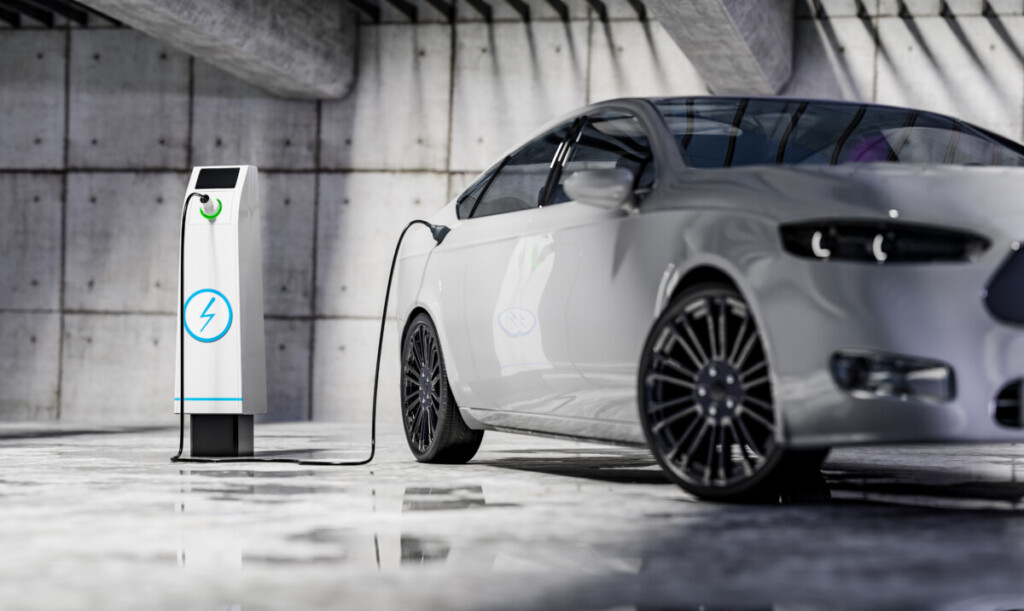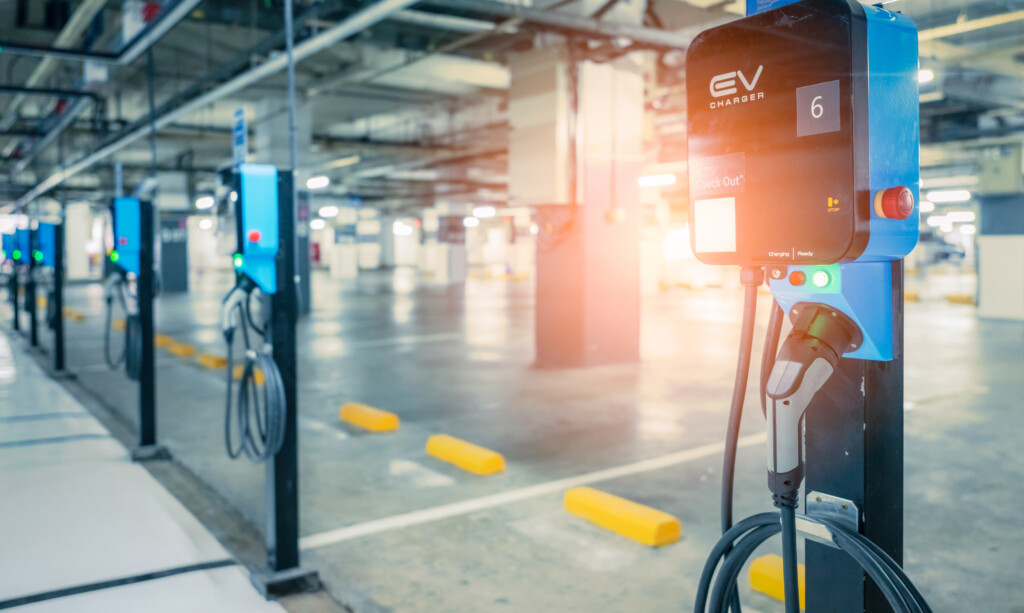Everything You Need to Know About the UK’s New EV Charging Regulations

The United Kingdom has set the goal to end the sale of new petrol, diesel petrol, and diesel vehicles within its borders by 2030, with an eye toward all new cars and vans sold in the country producing zero emissions by 2035. This push for the adoption of electric vehicles (EVs) faces considerable challenges, some of which come from the logistical demands of EV charging infrastructure.
Since EVs account for a new and potentially unpredictable source of electricity consumption, the UK’s grid infrastructure could come under significant strain in order to keep all EVs charged and ready for the road. To help get ahead of the issue, the UK has instituted new regulations that hope to smooth the transition to EV omnipresence by specifying several smart features in EV chargers to help the national grid better manage the increased demand from EVs.
Our partners at Ampeco have previously discussed how these regulations could help modernize the UK’s grid. In this blog, we will look at the role IoT plays in these new regulations and the impact they could have on the EV charging industry.
Before we discuss the implications of these rules, however, let’s look at what the regulations actually contain.

Putting The “Smart” in the Smart Charge Point Regulations
On June 30th, 2022, the Electric Vehicles (Smart Charge Points) Regulations took effect in Great Britain, codifying the inclusion of smart functionality in privately owned EV chargers deployed at homes and office spaces. The “smart” prefix to “charge points” reflects the use of smart grid and IoT technologies to enable a more flexible grid; specifically:
- Connecting charge points and a server to measure, record, and transmit usage of electricity (in minutes and as units of energy)
- Enabling the ability to automate and remotely operate charge points to delay the start of a charge or switch to slow charge on demand
- Giving EV users the choice (and data) to decide when to charge their EVs (i.e. at cheaper times, such as an off-peak tariff period)
- Supplier interoperability to allow charge points to work with any electricity provider
- Preparing for demand side response (DSR) capabilities in future
By December 30th, 2022, the regulations also require all new charge points sold for private use to meet a set of security requirements. These requirements align with previously established regulations under cyber security standards set forth in ETSI EN 303 645, legislation covering the security of connected IoT devices in the UK, and industry-specific guidelines to secure EV charging systems. The key requirements can be summarized as the following:
- No default or shared passwords
- Encrypted communications between chargers and servers
- Secure software and firmware updates, as well as logging of updates
- Credentials that are randomly generated (not hardcoded on the device)

The Role of IoT in Meeting EV Charging Regulations
IoT offers charge point manufacturers, installers, and operators the tools needed to address some of these EV charging regulations. At the core of these smart functions is a need for encrypted communications between the chargers and a server. Unlike similar regulations in other countries, the UK regulations allow charge point owners to choose whether to connect via WiFi, Ethernet, or cellular connectivity. This freedom means there will be fleets of EV chargers that connect in a variety of ways. For charge point manufacturers or installers who offer warranty services or after-sales services, they will find that the operational overhead of managing the networks vary substantially. There are pros and cons to the different connectivity types, including the admin burden of managing these networks. As such, the design of an EV charger should also include this operational burden while also incorporating the EV charging features.
Once EV chargers are connected to a server, they transmit a mix of data, including equipment availability and status information, personal identifiable information (PII), communications data, and electricity usage. The challenge to an EV charger manufacturer, installer, or operator, then, is to make sense of and use this associated data with the appropriate security and privacy considerations. Through IoT, it is possible to remotely access the chargers to troubleshoot problems, provide reporting audits of availability, and even conduct predictive maintenance. But, as the regulations also require manufacturers of EV chargers to enable future grid flexibility through DSR services, electricity usage data must also be integrated back into the central grid. IoT data tools can help with the challenge of processing different types of data, and these tools should ideally be flexible enough to make sense of the mix of data formats and domains.
IoT also addresses some of the security requirements laid out in the regulations, which, incidentally, are good habits to adopt in IoT. For example, the regulations require that EV chargers not use default passwords and that all incoming and outgoing communications be encrypted. IoT, in its cloud-based nature, has the capability to address some of the security features as required by the regulation. For example, IoT platform services, such as those to manage connectivity and devices, can encrypt data transmission to and from the device, and provide some insights into what is happening within the charging network. Knowing what is happening is the first step in taking action should there be a security event.

Three Tips When Selecting the IoT Technology Appropriate for EV Charging
Beyond simple connectivity, the “right” mix of IoT technology must help EV charger manufacturers, installers, and operators address three major challenges in the adoption of these new rules:
- Complying With the Basic Tenets of the Bill
Encrypted two-way data transfers are one thing, but a competent IoT service provider will also assist with meeting the security requirements set out in ETSI EN 303 645 through secure credential management and auditable OTA software updates. Some providers may even provide remote access capabilities that enable better monitoring of deployed equipment to enrich safety protocols, and set operators up for success.
- Supporting your Charge Point Deployment in a Competitive Market
An IoT connectivity provider should be able to help EV charger operators scale their deployments with competitive billing and pricing, but one should always expect more of a connectivity partner. A strong partner will help users aggregate and manage data from a diverse (In age and type) fleet of chargers – and potentially, connectivity types. A sound IoT partner will help facilitate automatic and remote operation of charge points, triaging problems to avoid costly and unnecessary maintenance visits.
- Helping to Incorporate EVs as Distributed Energy Storage Assets
Everyone must play a part in helping ensure the strength and stability of the national electricity grid, and IoT connectivity helps users to do their part by enabling demand response services. Connectivity provides charge point users with accurate billing and availability stats, but more than that, smart functionalities within IoT devices help distribute energy assets (both generation and storage) intelligently before feeding that information back to the grid.
………….

To hear more on these topics from AMPECO’s Petar Georgiev and Soracom’s Yiru Zhong, check out our joint webinar Taking Charge: EV Infrastructure Rollouts Done Right. This free webinar covers how to anticipate and address the operational and technical challenges of EV charging infrastructure rollout, and is now available on demand.



